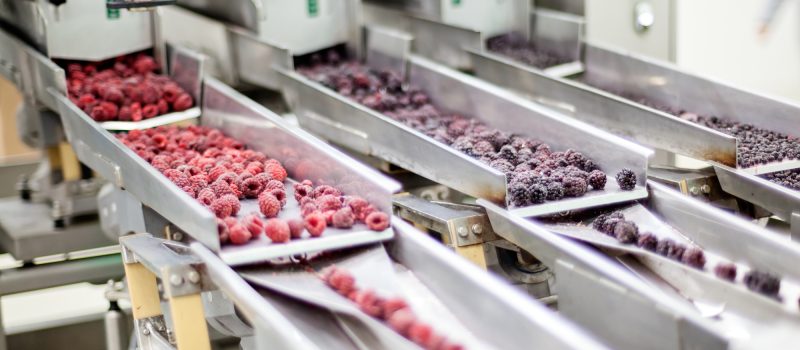Food born illnesses account for about 48 million sicknesses every year. That’s roughly every 1 in 6 people. With numbers, this high standardization of food hygiene rules is more than necessary.
Keep reading for tips on how to best prepare your facility for food prep.
Food & Drug Administration
The purpose of the FDA is to ensure the safety of food, pharmaceuticals, cosmetics and some electronics for public consumption. In the past, they dealt with problems only as they came up. They now have the power to create enforceable regulations. This is carried out through several methods:
- Sampling
- Research & Development
- Inspection
- Criminal prosecution
- Seizure
- Injunction
- Recall
- Voluntary Destruction
Who Needs to Register
The FDA regulates imported food and food intended for interstate commerce. Regulation for food safety is enforceable by law. This means you could face serious fines or jail time if you are not in compliance.
Who must register their food processing business?
Anyone intending to manufacture, package, process, or hold foods for consumption by humans or animals. You are exempt from this if you do not intend to sell (or import for sale) food outside your state’s lines.
Check with your local government for regulatory standards.
If the intent of your facility is to process meat, dairy, or eggs you will need to register with the USDA.
How to Register
Required licensing for food businesses vary by state for in-state sales.
The FDA requires you to fill out a form for registration.
You may have seen “FDA approved” on products but it is important to know that the FDA does not “approve” food products. Pharmaceuticals and food additives a couple exceptions to this.
The FDA usually checks for compliance when a concern arises about a facility. This is why it is important to ensure your staff up to date on HACCP and Good Manufacturing Practices. HACCP is an acronym for Hazard Analysis and Critical Control Points. These documents contain the major regulatory standards mandated by the FDA. They are provided on the Food and Drug Administration website.
Leafing through the federal website can amount to hours. This is time wasted if the information is not easy to digest by your staff. Check out the HACCP system to ensure that your employees learn the right information. The included video prompts and exams can save hours of endless page turning.
Food Hygiene Rules
Food safety rules exist to prevent biohazards as well as physical hazards. Here are a few basic food hygiene rules for when you want to open your own food processing facility.
Food Preparation Saftey Steps
1. Clean
Wash your hands with warm soapy water before handling food for 20 seconds. Always wash your hands after using the restroom, handling pets, or changing diapers.
Keep your area clean. Clean all utensils, cutting surfaces, and prep areas before and after handling food.
Consider using disposable clothes for work surface cleaning. If you use towels, be sure to wash them in a hot cycle. Musty smelling rags, sponges, and mops are harboring mold growth. THese should be washed or thrown out.
2. Separate
Make sure all raw meats are separated from other foods. Keep meat and produce prep separate to avoid cross-contamination.
Do not place cooked food in an area that held raw meat unless it has been thoroughly washed in hot water.
3. Cook
Ensure that all raw foods are cooked to the proper temperature. A food thermometer is the only reliable indicator of doneness for meat and eggs. This will kill any bacteria present in the food.
4. Chill
Refrigerate cooked or perishable foods within two hours. This shortens to one hour if the outside temp is above 90 degrees.
Use an appliance thermometer to keep your fridge at the right temperature.
Mold on food is still a threat in the refrigerator. This is especially true or sweet and salty foods. Clean refrigerators every few months and inspect for mold growth.
Facility Layout
You’ll have to consider the layout of your facility for food safety and physical safety. Did you know combustible dust in the air can ignite and cause explosions? Prevent this by keeping dust causing machines away from machines with heated surfaces.
Building a facility may be the most cost-effective option. Building from the ground up can ensure you get the layout best-suited to your business.
Equipment Maintenance
Regular maintenance and cleaning of equipment will keep it top working order. Poorly maintained machinery can cause fires and deadly injuries.
Replace filters and old equipment as needed. Old equipment becomes more and more unpredictable as time goes on. This increases the safety hazard. Also, equipment may become obsolete as new safety regulations are created.
Record Keeping
The FDA requires that you keep documentation of your receiving and shipping practices. Depending on your product, you will have to disclose where you purchase, hold, and send your items. This information must be available upon request to the FDA. Keeping proper records will help you avoid any legal trouble.
Open for Business
Regulation compliance for a food processing facility can be time-consuming. This is a major trade-off for avoiding problems that may arise in the future.
Educate your employees on proper food hygiene rules and manufacturing practices. Make sure your facility is large enough to safely conduct the business of food processing. When issues arise as a result of business, make sure to handle them quickly and keep proper records.
Check out our website for more tips and tricks for your business needs.

